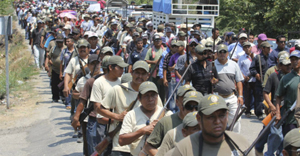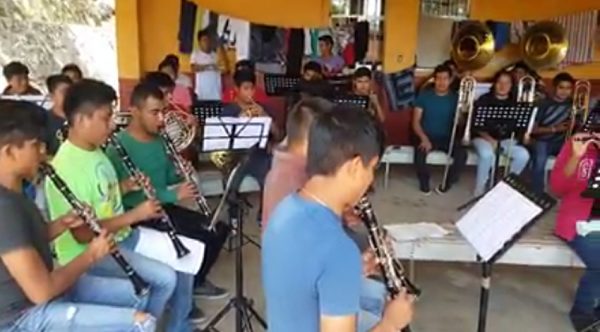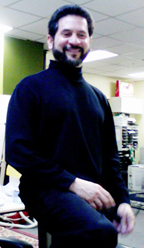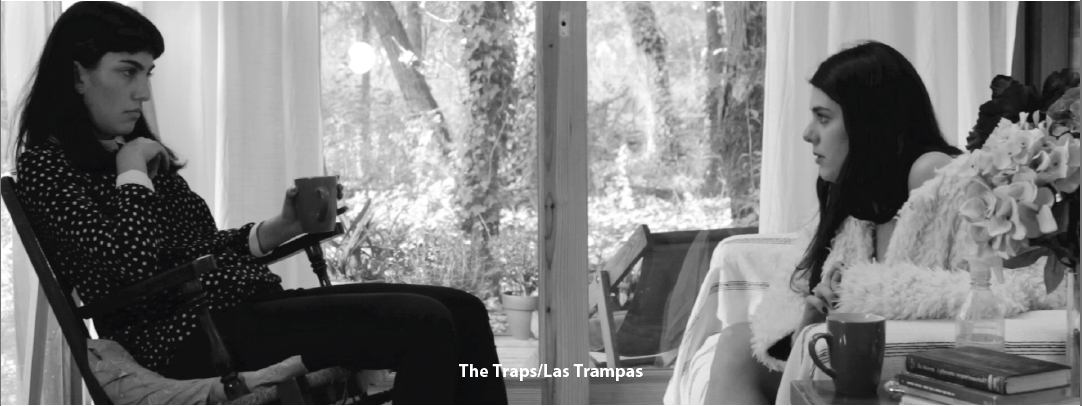But armed forces have agreed to mount operation against a local crime gang
by the El Reportero‘s wire services
It wasn’t long after the establishment of yet another self-defense group in Guerrero that representatives of the armed forces met with its leadership and agreed to go after local criminals.
The spokesman for the new United Ejidos Rural Police said senior officers in both the Army and the Navy met yesterday with the new police force and agreed to pursue members of a gang that has been blamed for murders, assaults, robbery and extortion in seven ejidos, or agrarian communities.
The ejidos are located within the municipalities of Zihuatanejo and Coyuca de Catalán.
Artemio Sánchez Sánchez of the new police force said the meeting also agreed that the police would document the criminal activities of the gang and file criminal complaints.
He said the ejidos’ force, made up of at least 200 men armed with 22-caliber rifles and shotguns, would wait for a few days to see the results of efforts by federal forces before taking any action on its own.
Its original intention, announced Saturday in Vallecitos de Zaragoza, was to take on the gang and defend local citizens against it.
Sánchez lamented that neither state nor municipal authorities were represented at yesterday’s meeting, and issued a plea to the state that it send police to assist the federal forces.
Source: El Sur (sp)
Training CJNG recruits: they eat their victims
Teenage gang members reveal use of cannibalism
Eating human flesh is part of the training for young recruits to the Jalisco Nueva Generación cartel (CJNG), two teenage boys told state authorities in Tabasco.
The teenagers, aged 16 and 17, said they were forced to eat the flesh of their torture victims, said the state Attorney General’s office. The two suspected members of a local CJNG cell were arrested recently in relation to the execution of five people on May 23.
Earlier that month the minors apparently kidnapped, tortured and executed an individual. The two boys narrated, “without any sign of remorse,” that they kept the corpse in a fridge and for a period of time cut off and ate pieces of the flesh.
The body was found on May 26 on the banks of the Carrizal River in the municipality of Nacajuca. At the time authorities said the corpse was missing both arms and other unspecified parts.
The Attorney General believes other minors have been trained by the CJNG in the same manner, and that boys as young as 12 could be part of the same process.
The training, said the authorities, is intended to create extremely dangerous, cold-blooded criminals.
Governor Arturo Núñez Jiménez lamented that more and more minors continue to be recruited by organized criminal gangs, and called on the people of Tabasco to assume their shared responsibility to prevent the phenomenon from happening.
Source: El Universal (sp)
Mexico: Former municipal mayor sentenced for beating journalist
Enrique Benjamin Solis, former mayor of the municipality of Silao, in the Mexican state of Guanajuato, was sentenced to two years in prison for qualified injuries and threats to the reporter Karla Janeth Silva, of El Heraldo, the newspaper reported today.
Solis, a member of the ruling Institutional Revolutionary Party (PRI), confessed that he had ordered Police Director Nicasio Aguirre to beat the journalist for criticizing him.
The trial lasted more than two years. The aggression was perpetrated on September 4, 2014, in El Heraldo’s office in Silao, by Jose Samuel Ornelas, with support from Luis Gerardo Hernandez and Joaquin Osvaldo Valero, who were paid by Jorge Alejandro Fonseca, deputy director of the police.
The newspaper noted that although Solis was sentenced, justice was not served, because the other participants in the organization and execution of the attack were not indicted.
It was reported that Solis will only serve seven months and days of the sentence, because he spent one year and four months in the Social Rehabilitation Center (Cereso) during the trial.










